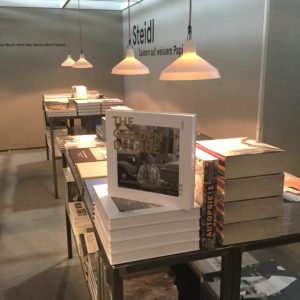
Our involvement with the Golden Decade started after Victoria’s father, Don Whyte, passed away in Santa Rosa, California, in1989. He’d bequeathed Ken his darkroom equipment as they both shared a passion for photography. None of Victoria’s siblings wanted to deal with all the rest of the contents of the very packed darkroom. They felt overwhelmed and their suggestion was to throw it all in the burn can that was sitting just outside the darkroom door! Ken, a lover of all things old and historical, and especially photographically related, was horrified at this and so he offered to take it all, to which they were all more than happy to let us do. And so it was that a few weeks later several boxes arrived at our home. Had the darkroom’s contents not been rescued, this book and all the ensuing exhibits would never have happened!
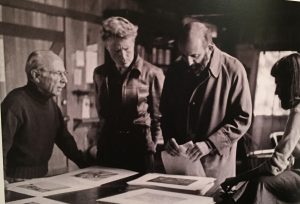
Over the next months, we started sifting through all the material. I’d find Ken up into the early hours of the morning looking through film rolls and cabinets filled with negatives and contact prints. Seeing faces he recognized, he asked me, “Did your father know Edward Weston, Ansel Adams, Minor White and Imogen Cunningham? I said, “Yes, we lived down the street from Ansel Adams in San Francisco when I was a child, and later we visited him at his home in Yosemite. My sister Caroline was even one of the models that he used in his Yosemite Kodak Polaroid Project.” My dad didn’t talk to us about his time at the California School of Fine Arts (CSFA), but we were all well aware of his passion for art and photography! He always sported several cameras around his neck, and if we were walking down a street and he was suddenly missing, we’d look around for the photo shop and sure enough he’d have ducked in it!
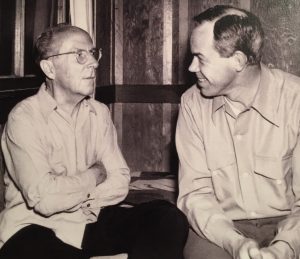
Among the darkroom contents was an inauspicious manila envelope marked “CSFA Exchange Prints” with my mother’s unmistakably strong handwriting, containing about 85, 4” x 5” contact prints, neatly mounted and signed with names like Chinn, Heick, Hollingsworth, Wallace, Bertolino, Hyde, Howell, Richter, Wallace and Whyte. We were intrigued. We had no idea at that time that the course of our lives was about to be altered!
We wanted to find out more about what the images were. We re-read a draft of my dad’s memoirs, painstakingly organized from a big sack of taped together notes and lovingly typed by our youngest sister Jennifer. That has been such a gift! In these memoirs he talked about the classes at the CSFA. This is when we decided to find other CSFA students who might still be alive and our research began in earnest. At that same time, an article appeared in Black & White Magazine, February 2000, with an article and photo spread about Rose Mandel by Susan Ehrens, a well-known photo historian and collector. The article mentioned that Rose was at the CSFA during the same years as my father, 1946-48. At the end of the essay was the contact information for Rose through Susan Ehrens. We made some copies of the photos and wrote to Susan. We asked if she could identify the people in the classrooms and field trips. Susan returned the photos with names written above identifying all the people. They were the same names on our contact prints. Susan said some of them were still alive and in the area.
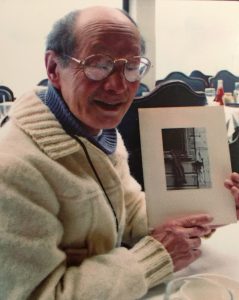
We started searching for one of the people that my dad seemed to take a lot of photos of, Ben Chinn. We figured they must have been friends. Through the Internet we found all the addresses for Ben Chinn in the San Francisco Bay Area and Northern California and we wrote to all of them. Ben Chinn, who was to become our dear friend and co-conspirator on the Golden Decade book, called us up a few days later. We agreed to meet at the Marine’s Memorial on Sutter Street in San Francisco. He asked if we minded if he brought a friend, and we said of course not! The person he brought was Bill Heick.
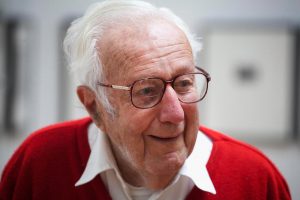
On February 11, 2002, we took off work and headed into San Francisco. I still remember how excited we both were as we walked up to the Marine’s Memorial. In the lobby downstairs, we met Ben, and standing near him was a gentleman with very white hair who turned out to be Bill Heick! We rode the elevator up to the restaurant. Over lunch we got to know each other. They became animated as they looked at each photo and then told us the stories about them. We spent several hours going through all the photos we brought. It was like a dam breaking as their memories flooded and covered us all with their incredible experiences. It was hard to keep up with them. I distinctly remember the joy we all felt–I think especially me, because I was learning things about my dad that I had never known. Bill said they had just been talking about my father a few days before saying, “Does anyone know what happened to Don Whyte?” We fell in love with their stories–and them!
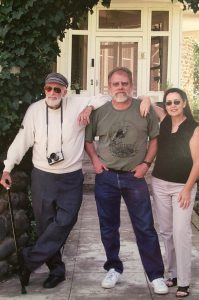
We met with them again on April 10 and this time they brought Cameron, (Cam) Macauley along. We showed them a copy of a book, “Selected Images, Michael Donald Whyte,” that we had put together for my family as a Christmas present. When they found out that we were graphic designers, they asked us if we would help them put their own book together that they’d been working on with Ira Latour for 15 years! Of course we said “Yes!” We had no idea what we were signing up for! We then all met with Ira Latour, and we mapped out what each of us would be responsible for. Ira would do the writing; Bill would do the photo sequencing; Cam would collect and advise; Ben, who was the one who had kept track of all the CSFA photographers and knew their addresses, would contact the other CSFA students and arrange for us to collect and scan photos from them; Ken would do the design; and I would help collect and coordinate. The Golden Decade book project was off the ground!
Then came a time of intense research. Since it was decided that we wanted to include the portfolios of other CSFA students we needed to track down former students to scan their photos and write their biographies to include in their section of the book. The women were much harder to find because many had married and changed their names. The Internet made it possible to locate people though it took many tries, dead ends, and a lot of hard work and Luck! Pat Harris was located in Oregon through an article at the State University of Oregon in Eugene where she was a professor of Zoology that mentioned she had studied with Ansel Adams at the CSFA. Muriel Green was living in France. She had married Michel Jobert, who later served as Foreign Minister with President Georges Pompidou and later as Minister of State for President Francois Mitterrand. We found her because of an article in a college newspaper that mentioned that Muriel’s brother had dedicated a photo wing in memory of his sister Muriel Green Jobert. And after many years we finally found Helen Howell through the Women’s War Memorial in Washington D.C. as she was a veteran.
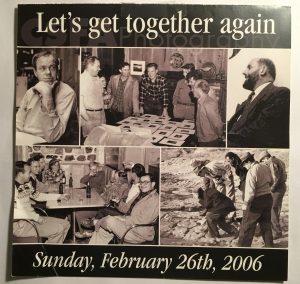
In February 2006, we arranged a luncheon at our daughter Nina’s home, who at that time was centrally located on Alamo Square in San Francisco. We invited CSFA alums from all over the country. Many of the students hadn’t seen each other since their time at the CSFA nearly 60 years ago. They came from the Bay Area, Southern California, Oregon, New York and Florida!
That same year the book “The Moment of Seeing,” by Doborah Klochko and Stephanie Comer, a beautiful book about the beginnings of the Photo Department at the CSFA with the essay by Jeff Gunderson, was published by Chronicle Books. The book’s launch coincided with the 60th Anniversary of the beginning of the Photography Department at the CSFA by Ansel Adams. We helped Jack Fulton, head of the photo department, curate an exhibit of Golden Decade photography students. Kathie Lowry, who was the VP of Advancement at SFAI, put together a top notch schedule of events and a beautiful photo exhibit collected from CSFA students! The exhibit was hung in the Diego Rivera Gallery, just as they had done there 60 years ago. There was a panel discussion and several meals and gatherings for the public to enjoy and it was well attended. The Golden Decade photographers came from all over the country and the school arranged for them to stay at a beautiful hotel nearby. Michael Creedon, Kelly Hardesty, and Ana Adarve were on hand to help coordinate and take pictures too!
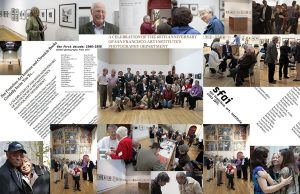
As serendipity would have it, Jack Fulton had arranged for all the photos to be taken over to a gallery about 30 miles north in Marin County after it was taken down from the Diego Rivera Gallery. An artist named Miguel arrived with big packing crates to transport the photos, but we were nervous. We had collected about 100 vintage photos from the photographers, had signed insurance agreements with them, and we felt extremely responsible to return the photos to their owners. But that was not to be so, at least not right then. The guy who was there to pick up the photos, could see we weren’t going to give him the photos. He very nicely said that he had been sent by Stefan Kirkeby for his gallery. I (Victoria) thought to myself, Kirkeby… Kirkeby, I know that name. I said, “You mean Paula Kirkeby’s son Stefan Kirkeby?” And he said yes! My father had helped Paula Kirkeby start her gallery in Palo Alto back in the 1960’s. I then understood the connection and knew we were in good hands, so I relaxed and let the photos go! That was really a strange experience – I hadn’t heard that name in over 40 years. We worked it out with all the photographers and the exhibit then moved to the Smith Andersen Gallery owned by Stefan Kirkeby in San Anselmo. The Golden Decade’s launch and Renaissance was really started then as this was the first of many beautiful exhibits and the book was produced in tandem for the first exhibit. In 2010 we finished the first iteration of the book and self-published a Limited Edition of 140 copies for the first of the Golden Decade exhibits at Stefan’s gallery and we had a couple of book signings. The book sold out! Stefan’s influence has been invaluable. He has been a major force behind creating the Golden Decade project.
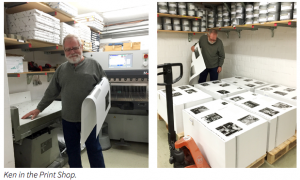
Subsequently we sent the book to many publishers and after a slew of rejection letters, John Upton and Stephen Goldstine suggested we submit the book to Steidl. We got a one line reply back from Gerhard Steidl himself saying that, “Yes, it is a good book project, please send all visual materials or dummy.” So we sent the book we had put together off to Steidl in Göttingen Germany. That was the beginning of 2013. We traveled to Germany to rework the book with Steidl in July 2015. We returned to Göttingen in April of 2016, to be there to proof the book as it came off the press! It is 418 beautiful pages of Golden Decade photographs. We were worried Steidl would cut the book down from its 316 pages, but instead, he added 100 pages! We observed as he chose the paper, inks, and cover himself. We were learning and listening the whole time. It has been an unbelievable experience! Steidl publishes hundreds of books each year and turns down thousands of submissions. It is a great honor that he wanted to publish The Golden Decade.
The Golden Decade book and subsequent exhibits would never have happened had we not been keen to take the time to look through my father’s photos and archives. Initially it was Ken who volunteered to go through everything. Watching him get excited about all the photographers and artists, sparked something in me. Looking for my father’s photo peers got me enthused even more. Then we we actually met and got to know Ben, Bill, Cam, Ira, John Upton, David Johnson, Pat Harris, Gerry Ratto, Charles Wong, Stephen Goldstine, Stan Zrnich, Zoe Lowenthal, and many others very personally over the years it opened a connection with my father that I never had during his life. It added the depth that I was searching for. It instilled an inspiration and drive that we needed to do the painstaking research and endless editing to follow the 14-year course from the book’s inception to its completion.
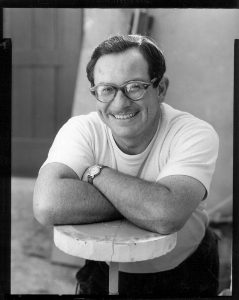
Through the connection with these wonderful photographers, I’ve grown to understand my father’s passion for photography and art. I wasn’t their daughter, and therefore, they treated me as an equal – not a child – it was really quite nourishing and wonderful – not something I had experienced when my dad was alive, though he really did try to teach me. I’ve experienced vicariously through these photographers, what I might have received when my dad was alive. I’ve been able to reclaim and rebuild the relationship with my father that might have been, and I know that wherever he is, he’s smiling.